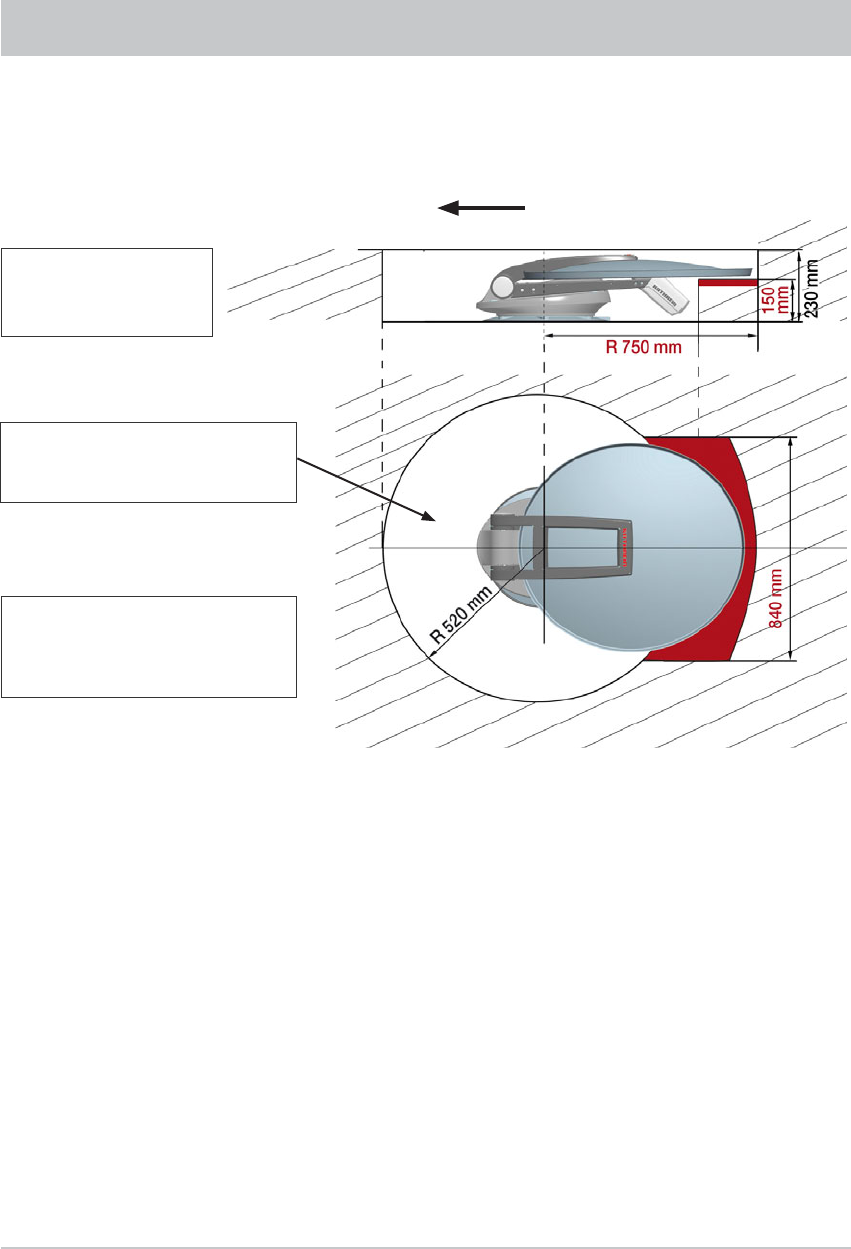
11
• When selecting the installation position, take into account the range of movement of the turntable
(see the grey shaded area in the graphics). Within this grey area there must be no structures on
the roof that would obstruct this movement (risk of collision). For safety, keep at least the required
area of 1024 x 1250 mm free (for ease of installation and any subsequent dismantling).
INSTALLATION AND CONNECTION
• Choose an installation position on the roof that is as fl at as possible: depending on the location of
the vehicle, roof pitches greater than 5° may lead to problems when searching for the satellite.
• To ensure secure adhesion, the height difference of the roof curve may not be more than 1 cm over
a length of 2 m, as otherwise the gap between the roof and the mounting plate would be too great
to be fi lled by the adhesive sealant.
• As the vehicle is constantly subjected to vibration loads during travel, the roof below the antenna unit
is also subject to signifi cant loads. Please note given the nature and capacity of your vehicle roof
(see also operating manual for the vehicle) that the weight of the antenna unit is approx. 19 kg.
In case of doubt, consult a qualifi ed dealer or your vehicle’s manufacturer.
• The roof gland provides a watertight seal through which the three connection cables (2 x coax
cables, 1 x power supply cable) are fed into the interior of the vehicle directly underneath the
turntable. If you prefer a different method of laying the cables, they can be run from the rear of the
turntable via the channel provided in the mounting plate. The cables must then be run along the
roof of the vehicle in a protective cable duct (not supplied). For the roof gland, use the HDZ 100
(BN 20410032) sealant available from specialist dealers as an accessory.
Note: Do not cut the cables short, as otherwise the proper functioning of the unit can no longer
be guaranteed.
Turntable movement range with
antenna, viewed from above onto
the vehicle roof.
Roof attachments may
be mounted within the
hatched area.
Safety clearances should be
maintained from the roof
attachments (e.g. due to
build-up of ice)
Direction of travel


















